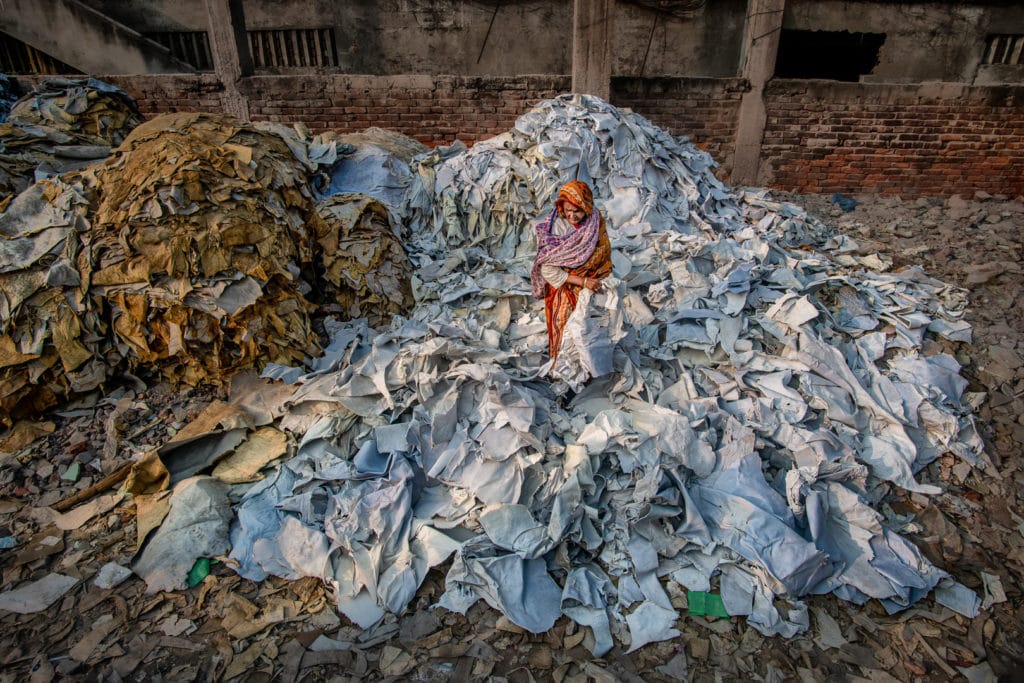Fashion
Fast Fashion and Emissions: What’s the Link? | Earth.Org

Characterized by affordable prices and trendy designs, fast fashion has gained much popularity among consumers. However, behind the popularity hides a huge cost for the environment and our planet. But how exactly does the fast fashion industry contribute to carbon emissions?
—
Fast fashion refers to a business model that emphasizes the rapid and large-scale production of clothing to keep pace with constantly evolving trends driven by luxurious looks, designer runways, and influencers.
Enabling retailers to offer a wide range of products, this model allows consumers to access diverse fashion options at lower prices. For individual consumers, fast fashion is a more convenient and economical choice compared to high-quality, durable clothing. But at what cost for our planet?
How Is Fast Fashion Linked to Emissions?
According to 2023 data by the United Nations Environment Programme (UNEP),
the fashion industry contributes to 10% of global carbon emissions annually, more than the emissions from international flights and maritime shipping combined. If current trends continue, its greenhouse gas (GHG) emissions are projected to increase by over 50% by 2030.
Although fashion-related carbon emissions cannot be solely linked to fast fashion, the latter remains one of the largest contributors. Indeed, the industry’s need to match trends leads to the continuous production of new garments, significantly increasing its environmental footprint. Consumers frequently purchase and discard perfectly wearable and often still new clothes as new trends emerge. This cycle of buying and discarding clothing greatly increases carbon emission, exacerbating existing environmental concerns.
Let’s look at where these emissions come from:
One of the primary causes of GHG emissions in the fast fashion industry is fabric production. A Changing Markets Foundation 2021 report found that, to keep the cost low, cheap materials like polyester – a synthetic and cheap fiber made from petroleum, a nonrenewable fossil fuel – are widely used in the production of garments. Although polyester can be a better fabric compared to cotton in terms of flexibility and cost, it cannot decompose until approximately 200 years later, resulting in significant environmental impacts including soil damage and groundwater poison. Additionally, it can create carbon emissions three times those generated by the manufacturing of cotto, leading to serious air pollution. It is estimated that a single polyester t-shirt has emissions of 5.5 kg CO2e compared with 2.1 kg CO2e for one made from cotton.
In addition to fabric production, another significant factor is the manufacturing processes for fast fashion. More than 60% of textiles are used by the clothing industry, with a substantial portion of production taking place in developing countries such as China, India, and Bangladesh. These regions have for decades relied on coal-powered plants for clothes manufacturing, further amplifying the carbon footprint of each garment.
This production mode has a huge social impact, too. Labour in developing countries is cheap, driving down the price of fast fashion items while also making it difficult for workers to sustain themselves. It is suggested that among 75 million factory employees, only fewer than 2% can earn a sufficient wage to support themselves.
More on the topic: The Danger of Sweatshops
Establishing factories in developing countries not only elevates carbon emissions during the production process but also increases emissions associated with transportation. Companies must transport raw materials to these manufacturing countries, and subsequently distribute the manufactured products globally. Some garments may even travel the globe multiple times during the manufacturing process. A 2024 study found that jeans production and cross-broad transportation contributed 91% of the carbon footprint of fast fashion consumption.
If nothing changes, research predicts that the fashion industry could account for 26% of global carbon emissions by 2050.
Future Outlook
With projections indicating that the fashion industry’s carbon emissions will rise by 60% by 2030 to reach 2.8 billion tons, roughly equivalent to the emissions produced by over 550 million cars in a year, it is crucial to consider how we can create a more sustainable future. Sustainable, slow fashion is often associated with reuse and recycling, but the current methods for recycling synthetic fabrics – which make up most fast fashion items – are quite limited. Only a few companies offer chemical recycling for these materials, and this technology is expensive and not widely accessible. Therefore, it is essential that future technological advancements and research focus on developing affordable and accessible production and recycling methods.
Consumers also have a significant role to play in reducing the carbon emissions from clothing production. One effective strategy is to carefully consider whether new clothing purchases are truly necessary, especially since in some countries, 40% of purchased clothing is never worn. Additionally, buying second-hand clothing can extend the lifespan of garments and reduce the demand for fast fashion items.
Featured image: Chin Leong Teo.
How can I contribute to a more sustainable planet?
- 🗳️ Vote for Climate Action: Exercise your democratic rights by supporting candidates and policies that prioritize climate change mitigation and environmental protection. Stay informed with Earth.Org’s election coverage.
- 👣 Reduce Your Carbon Footprint: Make conscious choices to reduce your carbon footprint. Opt for renewable energy sources, conserve energy at home, use public transportation or carpool, and embrace sustainable practices like recycling and composting.
- 💰 Support Environmental Organizations: Join forces with organizations like Earth.Org and its NGO partners, dedicated to educating the public on environmental issues and solutions, supporting conservation efforts, holding those responsible accountable, and advocating for effective environmental solutions. Your support can amplify their efforts and drive positive change.
- 🌱 Embrace Sustainable Habits: Make sustainable choices in your everyday life. Reduce single-use plastics, choose eco-friendly products, prioritize a plant-based diet and reduce meat consumption, and opt for sustainable fashion and transportation. Small changes can have a big impact.
- 💬 Be Vocal, Engage and Educate Others: Spread awareness about the climate crisis and the importance of environmental stewardship. Engage in conversations, share information, and inspire others to take action. Together, we can create a global movement for a sustainable future.
- 🪧 Stand with Climate Activists: Show your support for activists on the frontlines of climate action. Attend peaceful protests, rallies, and marches, or join online campaigns to raise awareness and demand policy changes. By amplifying their voices, you contribute to building a stronger movement for climate justice and a sustainable future.
For more actionable steps, visit our ‘What Can I do?‘ page.
This story is funded by readers like you
Our non-profit newsroom provides climate coverage free of charge and advertising. Your one-off or monthly donations play a crucial role in supporting our operations, expanding our reach, and maintaining our editorial independence.
About EO | Mission Statement | Impact & Reach | Write for us










